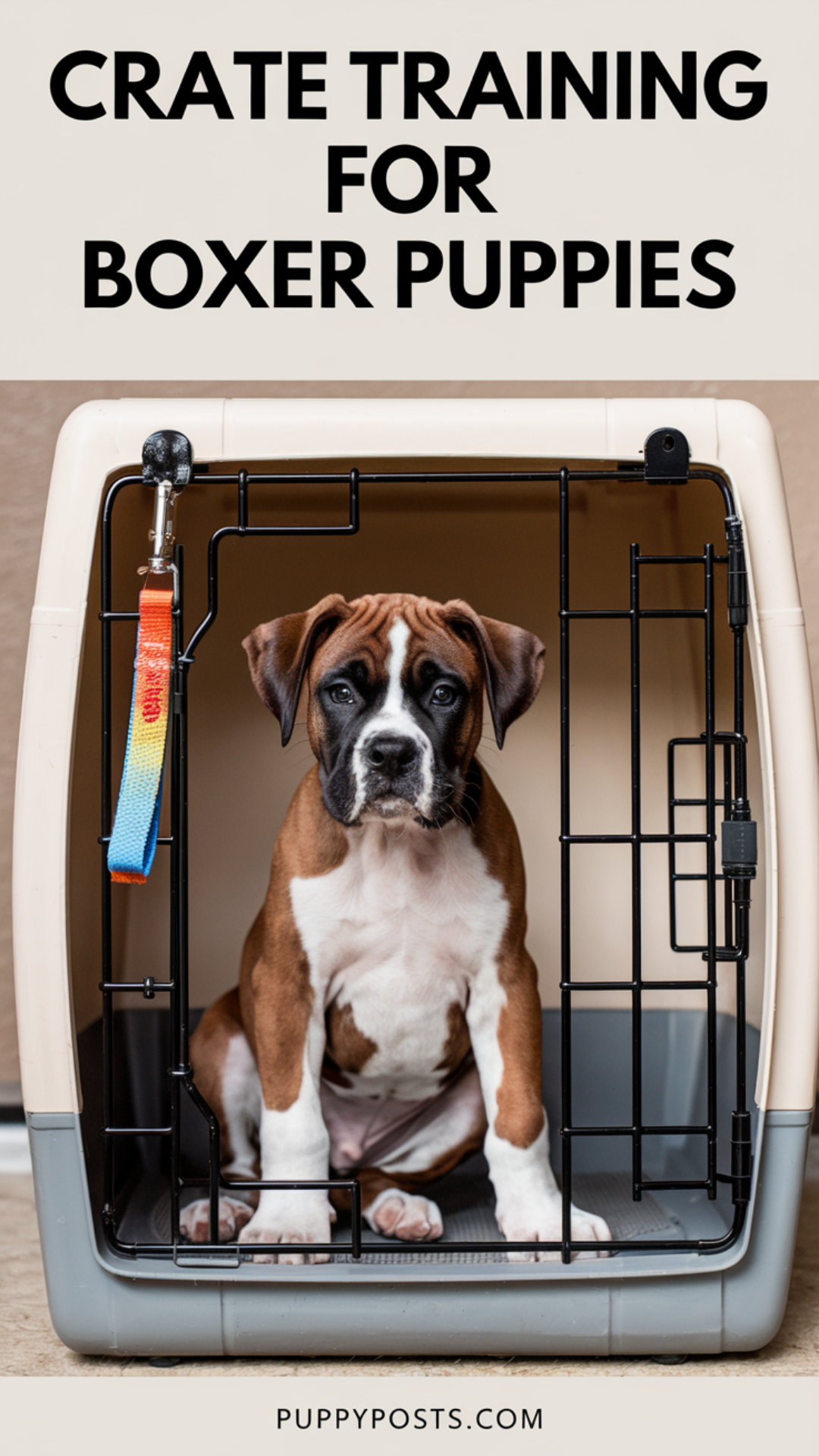Crate Training For Boxer Puppies
Boxer puppies are energetic, intelligent, and strong-willed—which means training them requires structure, patience, and consistency. Without the right guidance, a Boxer will turn your house upside down in no time. That’s why crate training is essential.
Now, let’s get one thing straight—a crate is not a punishment. Used correctly, it’s a safe, comfortable space that helps your Boxer puppy learn boundaries, independence, and good behavior. With over 10 years of experience as a veterinarian and as someone who runs a sanctuary for stray dogs and cats, I’ve seen firsthand how proper crate training can set puppies up for success.

Why Crate Training is Essential for Boxer Puppies
Boxers are energetic, playful, and strong-willed. Without structure, they’ll make their own rules—and trust me, you won’t like them. Crate training gives them a sense of routine and control, which leads to better behavior inside and outside the house.
The Biggest Benefits of Crate Training:
✔ Faster housebreaking – Dogs won’t soil where they sleep.
✔ Prevents destructive behavior – No more chewed-up shoes or furniture.
✔ Helps with separation anxiety – Boxers are clingy, and the crate teaches independence.
✔ Creates a safe space – They have a quiet place to rest when they need it.
Choosing the Right Crate for Your Boxer Puppy
Boxers grow fast, so picking the right crate from the start is important.
📌 Size Matters – Boxers need a large crate (at least 42 inches) to fit their adult size. Use a divider panel while they’re puppies so they don’t have too much space.
📌 Wire vs. Plastic – Wire crates are best for Boxers because they offer better ventilation and let your pup see what’s going on.
📌 Comfort is Key – Add a soft bed or blanket, but don’t go overboard—Boxers love to chew.
Step-by-Step Crate Training Guide for Boxer Puppies
Step 1: Introduce the Crate as a Positive Space
Your puppy should want to go in the crate, not be forced inside.
✔ Place the crate in a busy area – Boxers love being near their people.
✔ Keep the door open – Let them explore on their own.
✔ Use treats and toys – Toss a few inside to encourage curiosity.
✔ Feed meals in the crate – This builds positive associations.
🔹 Pro Tip: Never shove them inside or close the door too soon. Let them get comfortable first.
Step 2: Start Closing the Door for Short Periods
Once they go in willingly, you can start closing the door for a few seconds.
✔ Give a treat, close the door, and wait a few seconds.
✔ Open the door before they whine or panic.
✔ Slowly increase the time with the door closed.
🔹 Pro Tip: If your Boxer starts barking, don’t open the door right away. Wait until they settle, then let them out. Otherwise, they’ll learn that barking gets them what they want.
Step 3: Extend Crate Time Gradually
Now it’s time to increase the time they spend inside.
✔ Put them in after playtime – A tired Boxer is less likely to resist.
✔ Give them a safe chew toy – A Kong with peanut butter works great.
✔ Step out of the room – Start with a few minutes and build up.
🔹 Pro Tip: Boxers hate being alone. If they struggle with separation, leave an old t-shirt with your scent inside the crate. It helps them feel more secure.
Step 4: Use the Crate for Housebreaking
Boxers can be stubborn with potty training, but a crate makes the process easier.
📌 Follow the One-Hour-Per-Month Rule – A 2-month-old pup can hold it for about 2 hours.
📌 Take them outside immediately after crate time – Reward them for going potty outside.
📌 Be consistent with schedule – Regular potty breaks prevent accidents.
🔹 Pro Tip: If they have an accident, don’t punish them. Just clean it up and adjust their schedule.
How Long Can a Boxer Puppy Stay in a Crate?
Boxers are high-energy dogs. Keeping them crated too long leads to pent-up energy and bad behavior.
📌 8-10 weeks old → No more than 1-2 hours at a time
📌 3-4 months old → Up to 3-4 hours
📌 Over 6 months old → Can handle overnight crating (8 hours max)
🔹 Pro Tip: If your Boxer is barking, pacing, or destructive, they need more exercise before crate time.
Common Crate Training Mistakes (and How to Fix Them)
🚫 Using the crate as punishment – Your Boxer should see it as a safe space, not a timeout zone.
🚫 Letting them out when they bark – If you do, they’ll learn that barking works.
🚫 Leaving them in too long – Boxers need a lot of exercise. Don’t expect them to sit still all day.
🚫 Skipping positive reinforcement – Always reward good crate behavior with treats and praise.
Final Thoughts: Crate Training Sets Your Boxer Up for Success
Crate training is one of the best things you can do for your Boxer puppy. It helps with housebreaking, separation anxiety, and destructive behavior, while giving them a secure place to rest.
✅ Introduce the crate positively
✅ Increase crate time gradually
✅ Use the crate for potty training
✅ Never use it as punishment
With patience and consistency, your Boxer puppy will love their crate—and you’ll love having a well-trained dog. 🐾







